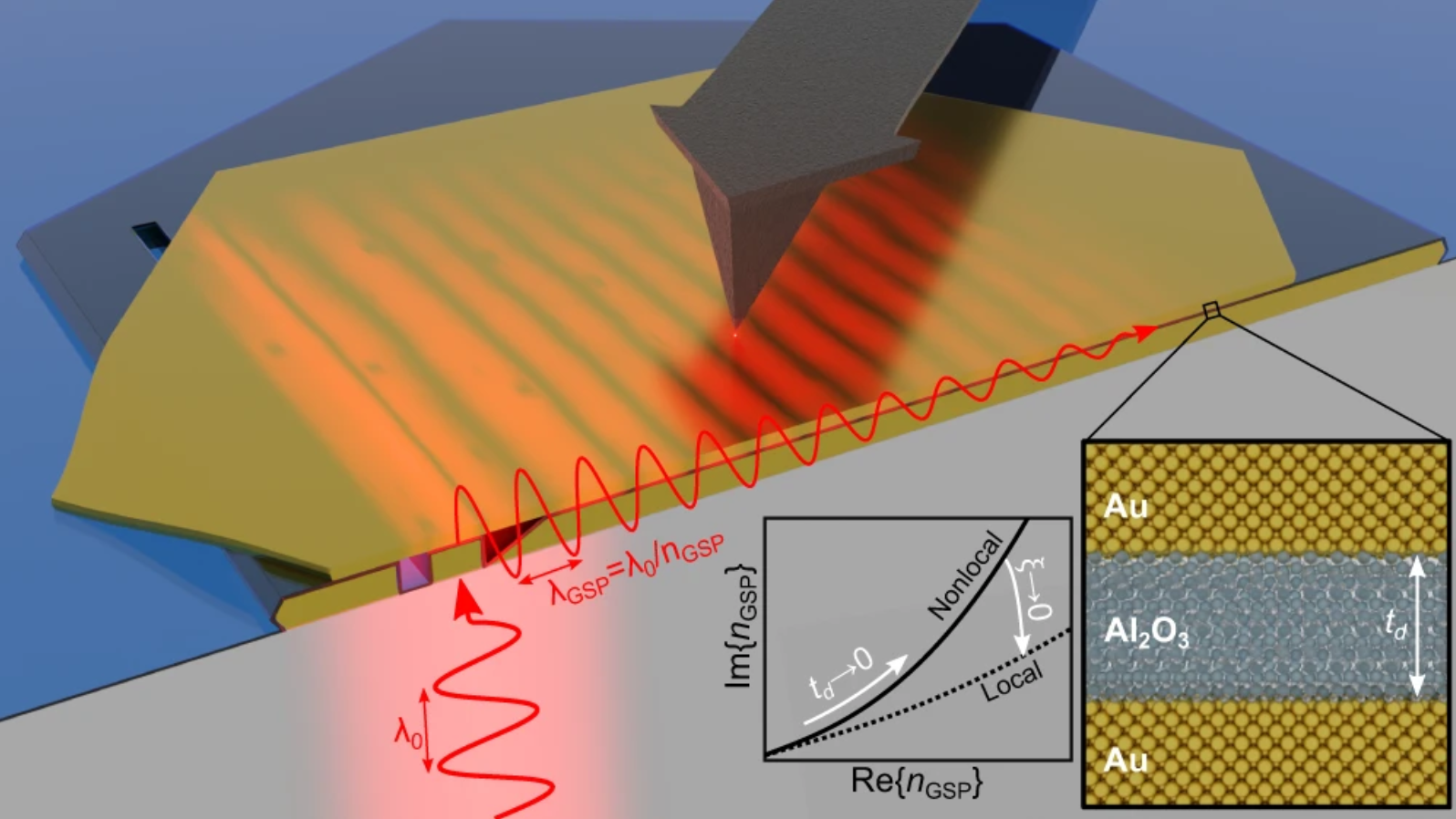- Home
- Research
- Nanooptics
- Research results
- Extremely Confined Gap Plasmon Modes: When Nonlocality Matters
Extremely Confined Gap Plasmon Modes: When Nonlocality Matters

11.09.2023
When light is “squeezed” into an ultrasmall gap between two metal plates (< 5 nm), quantum and nonclassical effects emerge due to the nonlocal response of the electron gas in metals. This can lead to the shift of plasmon resonances and introduce additional damping mechanisms, putting a fundamental constraint on the confinement of light. In particular, Landau damping, the energy loss due to relative motion between electron waves and individual electrons, is predicted to be extraordinarily enhanced due to the ultrahigh mode index in the gap. Such damping is typically neglected in classical electrodynamics but becomes significant in nanooptics. While the theoretical treatment of these phenomena is fairly well established, the experimental demonstrations and verifications are still missing.
This work focuses on the experimental verification of nonlocal effects in propagating gap surface plasmon modes in metal-dielectric-metal (MIM) waveguides with an extremely small gap, which is an ubiquitous element of plasmonic devices. To study the effect, conventional material losses due to surface roughness have been maximally suppressed by the use of atomically flat monocrystalline gold flakes (root-mean-squared roughness < 0.5 nm) and ultrathin atomic-layer deposited aluminum oxide films to fabricate the MIM waveguide heterostructures. The complex propagation constant of the gap plasmons was characterized with a state-of-the-art near-field optical microscope. By comparing with the predictions of a hydrodynamic model for plasmonics, the extraordinarily enhanced damping due to the nonlocal effect is experimentally demonstrated. This work is the first experimental demonstration of nonlocal damping in propagating plasmons.
This work demonstrates a successful intra-institute collaboration between the Research Department and the Competence Center for Micro- and Nanotechnology at Leibniz IPHT and a strong international collaboration between the institute and the University of Southern Denmark (SDU). Moreover, this work marks an important step in the combination of Leibniz IPHT’s expertise in photonic research with quantum nanooptics.
